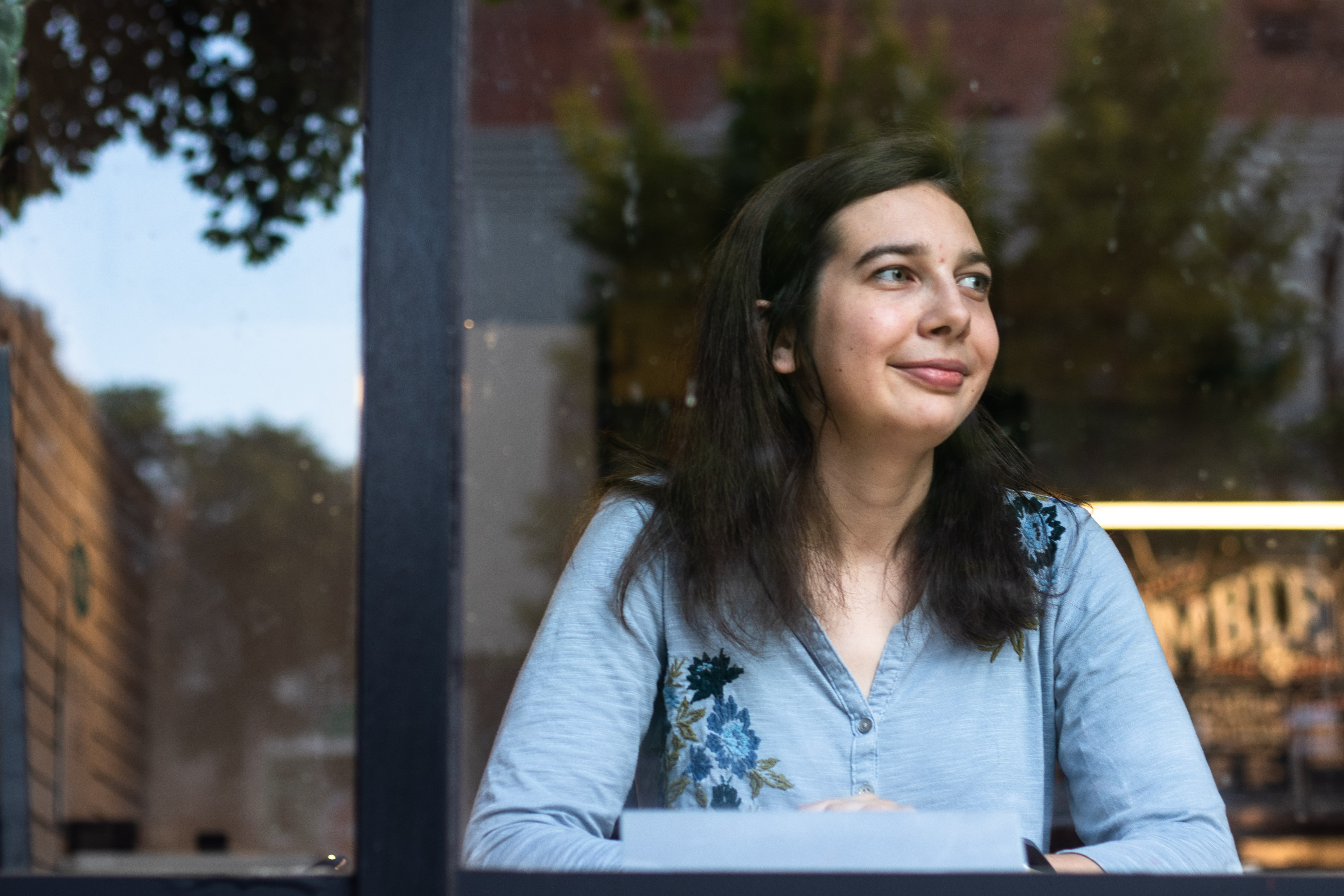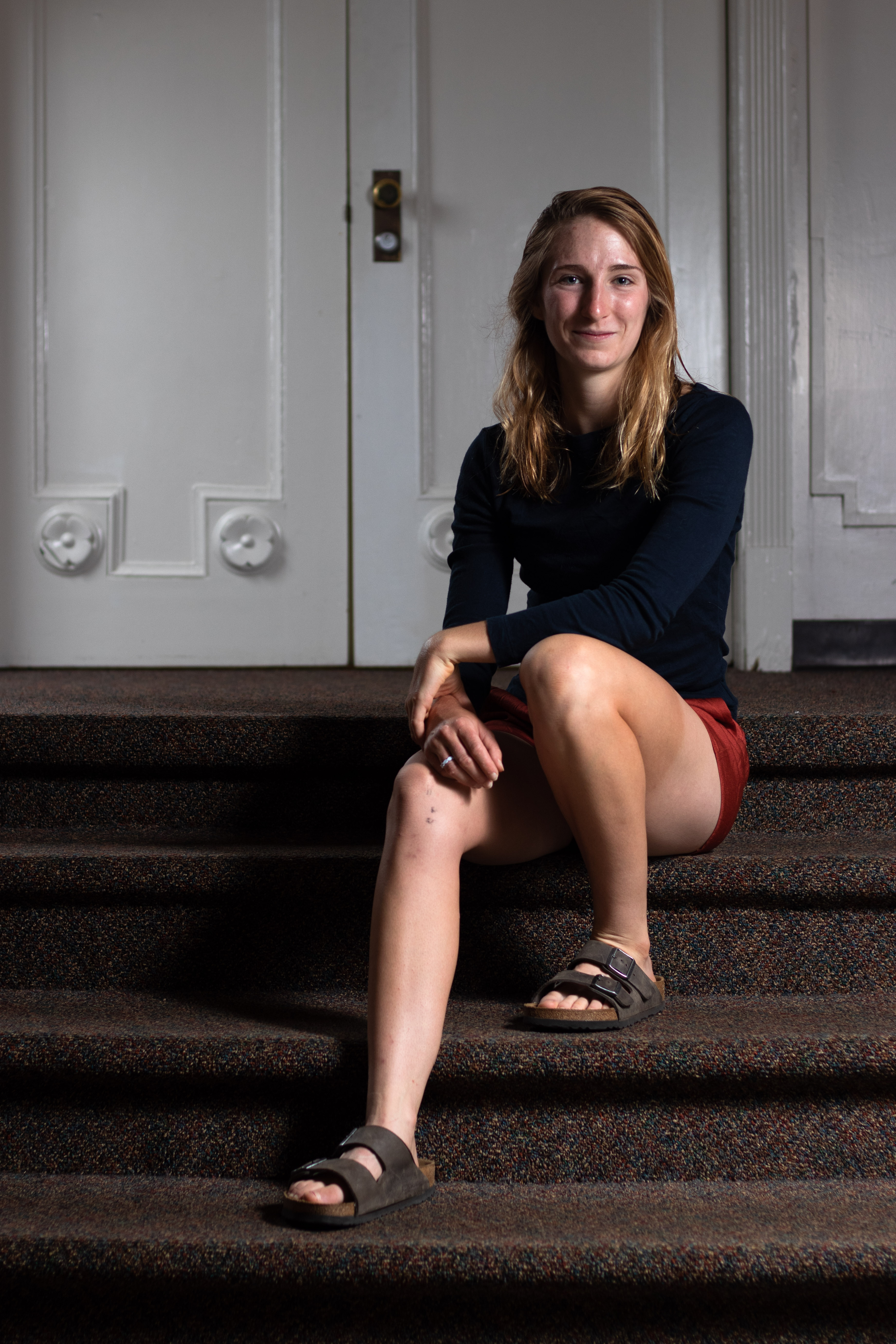
Casey Ellis remembers experiencing thoughts about her body image as a young girl. Ellis continued to deal with self-critical thoughts until the age of 16, when those thoughts manifested into anorexia nervosa.
She said battling an eating disorder is “like you’re living your own isolated life that no one knows about.”
Ellis’ account is one of many stories that show how an eating disorder can affect adolescents and the power it can have over the course of their lives.
In 2004, the phrase “eating disorders” was searched on Google around four times more than it was in the last year. Ellis is now 26, but 15 years ago, she would have been approaching her teenage years.
In 2019, Google Trends shows that the phrase ‘eating disorder’ was searched around four times less in both the United States and Georgia as it was in 2004.
Why It’s Newsworthy: The young people who were shaped by the spiked interest in and exploration of eating disorders during this period are already in or are entering into adulthood. Their unique battles with eating disorders reveal both its significance and its hidden nature in today’s culture of online perfection, especially at a time when restrictive eating and fad dieting are normalized and can potentially mask an underlying eating disorder.
Like Ellis, Ashley Bough, 20, an economics major at the University of Georgia and president of Women in Economics, and Grace Anne Ingham, 21, president of the University of Georgia Club Cycling Team, experienced the negative impact of comparison. At young ages, they began pressuring themselves to meet the standards of people in magazines and on the Internet as well as their peers and siblings, which ultimately contributed to the onset of their eating disorders.
Robin Staub-Grundstein is a licensed dietitian and a certified pediatric and adolescent weight management specialist at Healthy Habits Nutrition Consulting in Athens. In her practice, she’s experienced the themes of pressure that adolescents deal with — especially younger girls — to be physically perfect.
According to Nursing Center, body measurements for the “ideal” female body in the media have all significantly declined over time, while the body mass index (BMI) in young American women has been rising. This trend affects people of all ages, but it can be particularly problematic for young girls around middle school age who are beginning to enter puberty.
“When you go through puberty, your body needs to put on a little bit of fat so you can start your period,” Staub-Grundstein said. “Everyone gets a little chubbier until they start growing.”
Staub-Grundstein said her clients have become younger and younger over the last 10 years. In the last two years, she said she’s started to notice a significant increase in younger girls coming in to see her, some being as young as 9 years old.
This is something Staub-Grundstein partially attributes to new pressures from social media. But she says that stress, a need for control, parents and sports are all factors that contribute to her younger clients’ mental health struggles.
Staub-Grundstein said she had a 9-year-old client stop eating after learning her body mass index, which prompted her to tell local principals to stop schools from telling kids what their BMI numbers are.
A 1999 pediatric study on the effects of media exposure on preadolescent and adolescent females found that 69% of the girls that participated in the study said that pictures in fashion magazines influenced their idea of a perfect body. Additionally, 47% reported that these images made them want to lose weight.
Development At A Young Age

The summer after seventh grade, Ingham said she remembers wanting to transform her appearance so she could enter eighth grade as the “it girl.”
“I had this mental image of me walking back in the school and just physically being perfect,” Ingham said. “I was convinced the way to do that was to lose weight.”
In 2011, Ingham had a subscription to Seventeen Magazine, which featured images of “beautiful, perfect girls” and articles outlining low-calorie recipes, how to avoid snacking and how to get more exercise.
“I was like, 13, and I was like, ‘Oh, these are the things I should be worried about,’” Ingham said.
She decided to stop eating gluten—effectively cutting out most of her carbohydrate intake—and took up running. Ingham quickly lost weight. She was just over five feet tall and weighed about 70 pounds when she was diagnosed.
Bough recalls reading a book in middle school about the “perfect girl” who weighed 100 pounds. She began extreme dieting when she was 12, which lead to her developing a condition called amenorrhea, or the loss of her period.
“I felt like I didn’t really have control over my life any more. [Restricting] was an easy way to have some control over my life,” Bough said.
The Diagnosis
Ingham, Bough and Ellis were originally diagnosed with anorexia nervosa. Each dealt with the symptoms of their eating disorders alone until family or friends became involved.
Ellis partially attributes depression and anxiety to sparking the beginnings of her eating disorder. Before a close friend sat her down with her family and brought her struggle to their attention, Ellis dealt with her disorder alone.
Many of Ellis’ friends didn’t know she was dealing with these things until she began outpatient treatments after school. In the midst of her teenage struggles with her eating disorder, Ellis said she came to know God.
“It didn’t make the struggle any easier, but changed the way I wanted to live,” she said. “I really think if I didn’t know the Lord, there would be nothing keeping me from fully being in an eating disorder and not really caring what I do to my body.”
Ellis’ treatments continued with success until she left to attend college at the University of Alabama, when the isolation from her family led to a relapse of her eating disorder. Eventually, she returned home from school and began more intensive inpatient treatment.
However, because she was 18 at the time, she checked her herself out of her treatment three months early against medical advice.

Similarly, Bough said she didn’t realize the severity of her symptoms until a classmate asked her if she had an eating disorder.
“I thought, ‘everybody diets,’ like that’s normal and that’s what middle school girls are supposed to do,” Bough said.
Eventually, Bough decided that she “probably did have an eating disorder.” She told her mother about it and was formally diagnosed with anorexia nervosa soon thereafter. She began outpatient treatment and started going to group therapy when she was 13 years old.
“[Group therapy] was probably the most amazing experience of my life. Knowing that I wasn’t the only person struggling with it was really helpful because I got to learn about other people’s struggles,” Bough said.
However, the disorder became so severe that Bough was unable to go on a summer mission trip she had signed up for.
“It was kind of like a wake-up call for me, that I was damaging my body so bad that it was making me not be able to do things that I really wanted to do,” she said.
Like Bough, Ingham did not know she had an eating disorder until her loved ones noticed something was wrong. When Ingham’s parents saw how hollow her cheeks looked under the stage lights at a performance of the theatre camp she participated in over the summer, they realized how thin their daughter had become.
Ingham said her parents thought she might have had diabetes or a thyroid problem, so they took her to the doctor. After some testing, she was officially diagnosed with anorexia nervosa.
Recovery Process
Ellis, Bough and Ingham were all diagnosed with anorexia nervosa as teenagers, but each had different recovery experiences.
The three women found themselves in therapy at some point during their recovery. For Ellis, faith has been a significant motivator. Ingham found comfort in her cycling community.
For Bough, recovering has meant coming alongside peers who are struggling with problems similar to what she has gone through.
“It’s something no one talks about and something I felt completely alone in when I was going through it,” Bough said.
Because of Bough’s experiences, she feels more able to spot similar behavioral patterns in friends and other people that she knows. She often sees people around her refusing to eat certain food groups or having a general fear of food.
“A lot of times, it starts as a crazy diet or a restrictive diet,” Bough said. “I have a friend who started dieting and taking out food groups, and it reminded me of myself.”
Bough perceives that eating disorders remain a significant problem, having become involved in raising awareness when she was a senior in high school. According to a survey she conducted in her hometown in Missouri, 50% of her high school had partaken in binging or purging, excessive dieting or excessive exercise to lose weight. These behaviors, according to her, are over-normalized.

Ellis, Bough and Ingham have all become more aware of the negative thoughts that occur with their eating disorders. Bough said being aware of those thoughts has helped prevent her from falling back into her disorder.
“‘That’s an eating disorder thought; that’s not a normal person thought,’” she tells herself in moments of stress.
Ellis and Ingham also said they have to be mindful of their past struggles. Ellis, who wears a necklace ornamented with the National Eating Disorders Association (NEDA) symbol, visits the Eating Disorder Recovery Center of Athens (EDRCA) every other week to ensure she is managing her stress well and that she has a place to feel heard. To her, the experience has prepared her to help other girls who struggle with eating disorders or disordered eating.
Though eating disorders have become more commonplace according to Google Trends, eating disorders are not searched as often as the years passed, have fallen in the trends and they are not talked about as often as they were, they are still relevant in many peoples’ lives. Ellis, Bough and Ingham’s stories highlight the power these disorders can have in the dark and their defeatable nature when brought into the light.
Gabriella Audi, Sarah Freund, Meagan Hobbs and Amy Scott are seniors majoring in journalism at the Grady College of Journalism and Mass Communication at The University of Georgia.








Show Comments (2)
Todd L. Bell
Great post! and incredible blog! Very helpful post! I must say. Simple & interesting. Wonderful work!